Welcome, fellow adventure seeker! Today, we embark on an exhilarating journey through the breathtaking physical features of Montana.
Montana’s awe-inspiring mountain ranges, vast river valleys, and magnificent national parks are incomparable.
From the active glaciers and natural stone columns of Glacier and Yellowstone National Parks to the lush coniferous forests and cold lakes of Central and South-Central Montana, this outdoor playground offers an unrivaled sensory experience.
- Related article: Montana Size Details
Whether you’re a nature enthusiast, an adrenaline junkie craving adventure, or simply seeking solace in the embrace of Mother Nature, Montana has something extraordinary in store.
So, fasten your seatbelts, brace yourself for an enchanting ride, and join us as we unravel the mysteries of Montana’s diverse and captivating landscape.
Where Is Montana Situated?
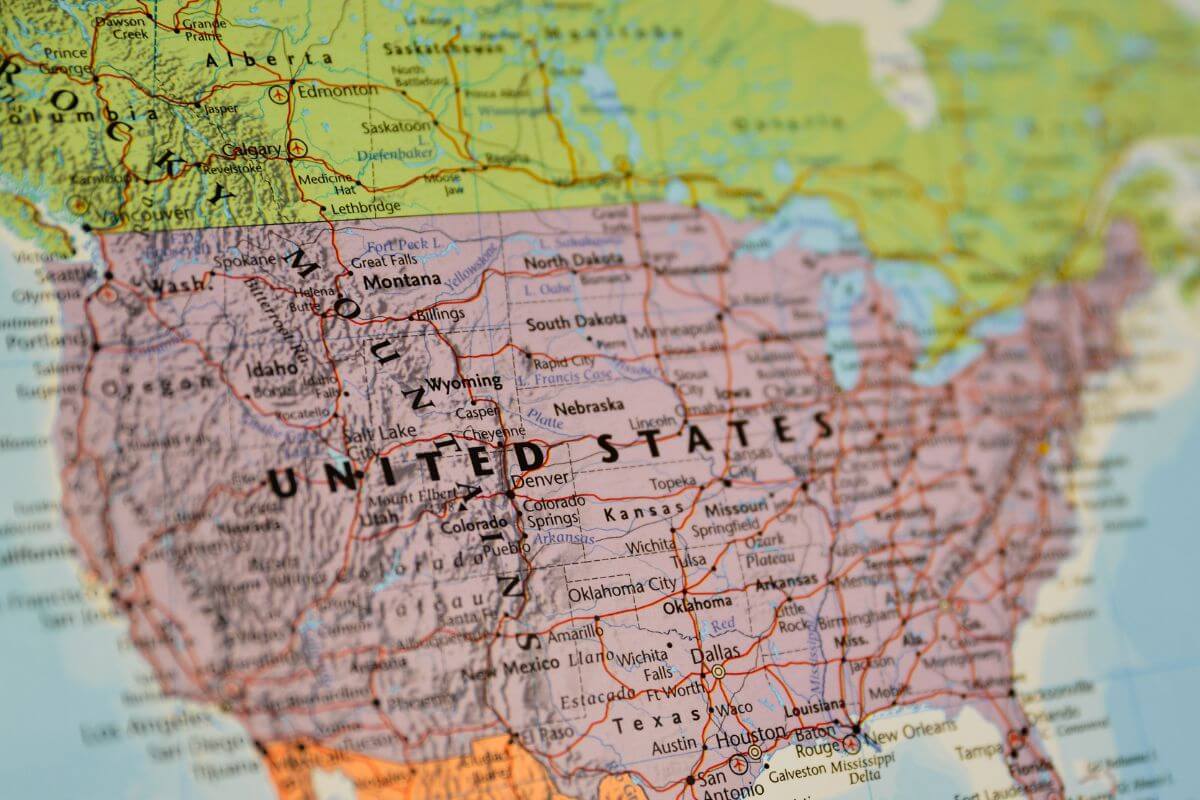
A sprawling paradise nestled in the northwestern United States, Montana’s total land area is a staggering 147,040 square miles.
This enchanting state finds itself in a geographically privileged position, with the provinces of British Columbia, Alberta, and Saskatchewan serving as its Canadian border or northern border.
To the east lie the neighboring states of North and South Dakota, while Wyoming and a portion of Idaho constitute the southern border.
Furthermore, Idaho borders Montana to the west, accurately positioning it to the southwest of the state.
Montana is considered part of the Mountain West Region, with its expansive mountain ranges and scenic beauty falling within this geographic region.
The region holds mesmerizing majestic Rocky Mountains that stand tall amid a tapestry of diverse landscapes that encompass mountains, valleys, plains, and rivers.
And let’s not forget the crown jewel that lies in its southwestern corner: Yellowstone National Park, a true natural wonder of North America.
As you traverse this magnificent state, you’ll encounter a vast forested land area, dry land formations, and a sense of connection to the untamed beauty of the great outdoors.
Montana’s Diverse Landscape
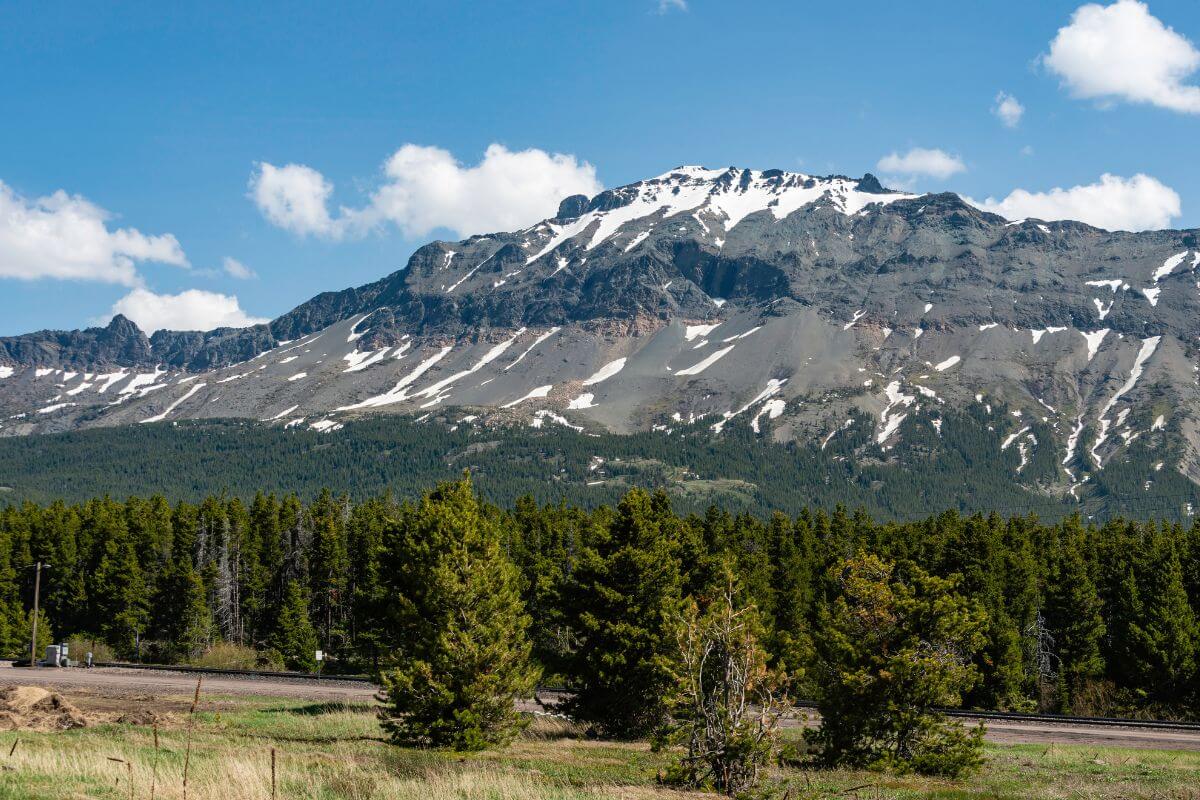
Montana is a state teeming with captivating landscapes, rich wildlife, and a fascinating blend of geographic features.
Stretching from the expansive Hudson Bay in the north to the picturesque eastern regions of Montana lies a tapestry of natural wonders waiting to be explored.
Montana Mountain Ranges
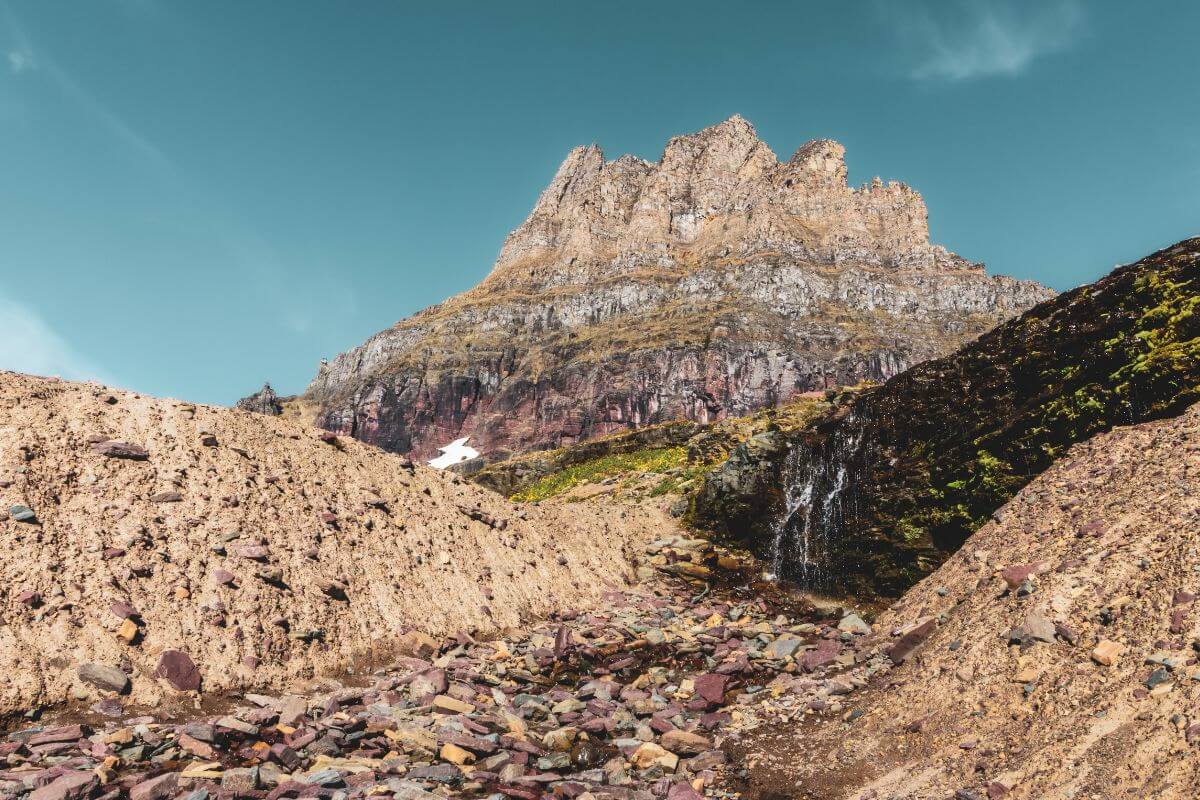
Montana is home to a diverse and stunning array of mountain ranges, with the most famous being the mighty Rocky Mountains.
These majestic peaks offer towering elevations, breathtaking vistas, and a wealth of outdoor recreational opportunities.
Covered in snow for most of the year, the Rocky Mountains in Montana showcase the beauty of active glaciers in their higher altitudes.
That said, there are also other notable mountain ranges that call Montana home.
The Central Rockies is characterized by its abundance of forests and grassy valleys, providing a habitat for a variety of wildlife, including Black Bears. It is also home to the ecologically vital Douglas fir.
The island ranges, such as the Bear Paws and the Absaroka Range, add a unique charm to the landscape.
In the western part of the state, the continental divide acts as a prominent geological feature, defining where water flows.
Rivers and streams on the western side eventually make their way to the Pacific Ocean, while those on the eastern side drain into the Gulf of Mexico. This divide adds to the natural beauty and diversity of Montana’s mountainous regions.
The Beartooth Mountains, known for their alpine scenery, offer outdoor enthusiasts a chance to explore pristine lakes, towering peaks, and rugged terrain.
The Bitterroot Range is famous for its canyons and peaks, providing a challenging and picturesque landscape for hikers and climbers.
The Cabinet Mountains, located in northwestern Montana, offer vast wilderness and diverse ecosystems, making them a haven for nature lovers.
Returning to the topic of animals, Montana’s mountain ranges are also home to an array of captivating wildlife.
These include the iconic Grizzly Bears, Gray Wolves, and Mountain Lions, thriving within the mountainous borders of Montana and epitomizing the wild spirit that roams these lands.
Whether you are a thrill-seeking adventurer or simply looking to immerse yourself in the splendor of nature, Montana’s mountain ranges offer an abundance of beauty and outdoor opportunities.
Montana Plains
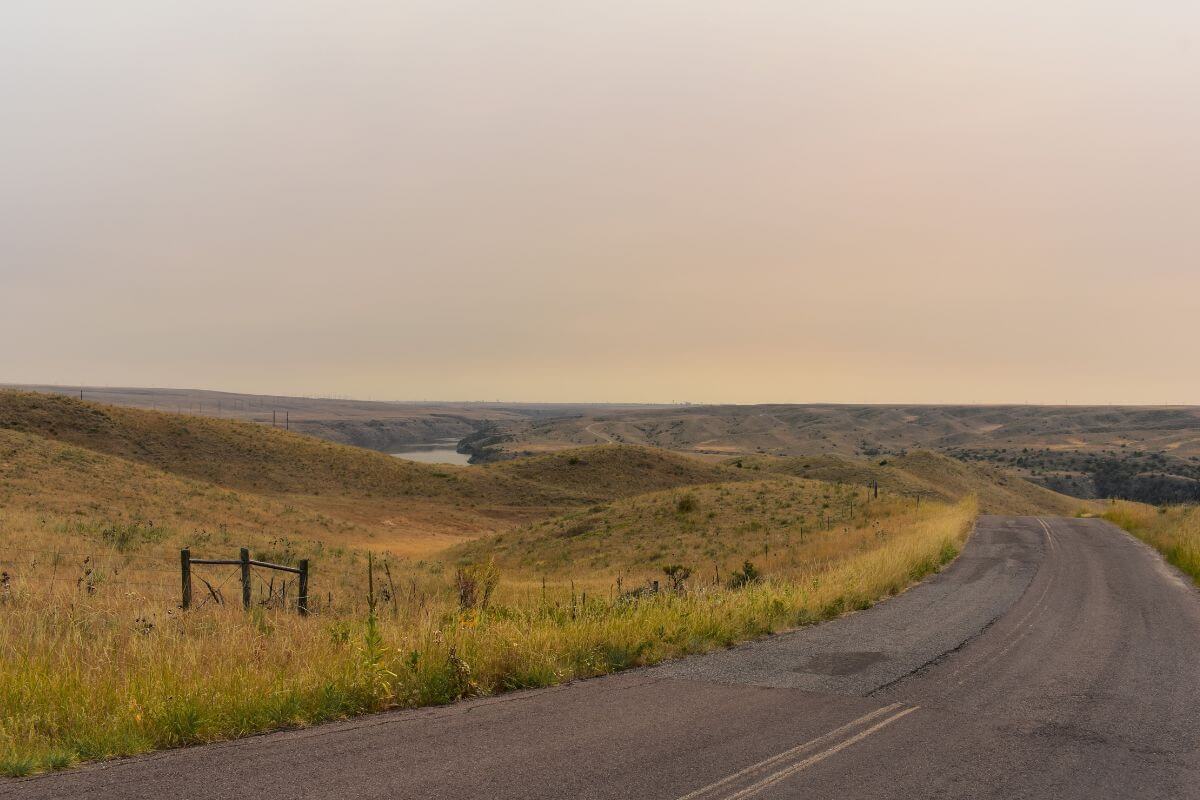
You can’t help but marvel at the breathtaking beauty of Montana’s plains.
In particular, Montana’s Great Plains occupy 3/5 of its eastern region, stretching as far as the eye can see.
These grasslands and prairies create a unique and awe-inspiring landscape that is as captivating as it is vibrant.
One fascinating geological formation shared with its neighbor, North Dakota, is the Northern Shortgrass Prairie, found in the western part of Montana.
Here, the grasslands extend for miles, offering a serene and peaceful atmosphere. It is a sight to behold, especially during the golden hues of sunrise and sunset.
These grasslands are not only visually captivating but play a vital role in supporting a diverse array of wildlife.
The Pronghorn Antelope, Mule Deer, Bison, coyotes, and migratory birds all call the Montana Plains home.
They rely on the fertile land and abundant vegetation for sustenance and survival.
The state’s vast plains hold significant historical significance, as well. They were the ancestral lands of various Native American tribes, such as the Blackfeet, Assiniboine, and Crow.
For centuries, these tribes flourished, relying on the land for sustenance and cultural practices. The plains also served as a crucial route for fur traders, explorers, and settlers during the westward expansion of the United States.
Moreover, the plains of Montana are of great economic importance.
The favorable climate, with cold winters and fertile land, offers ideal conditions for farming. It comes as no surprise that these plains hold multiple prime spots for cattle ranching, wheat farming, and even energy production.
Montana Valleys
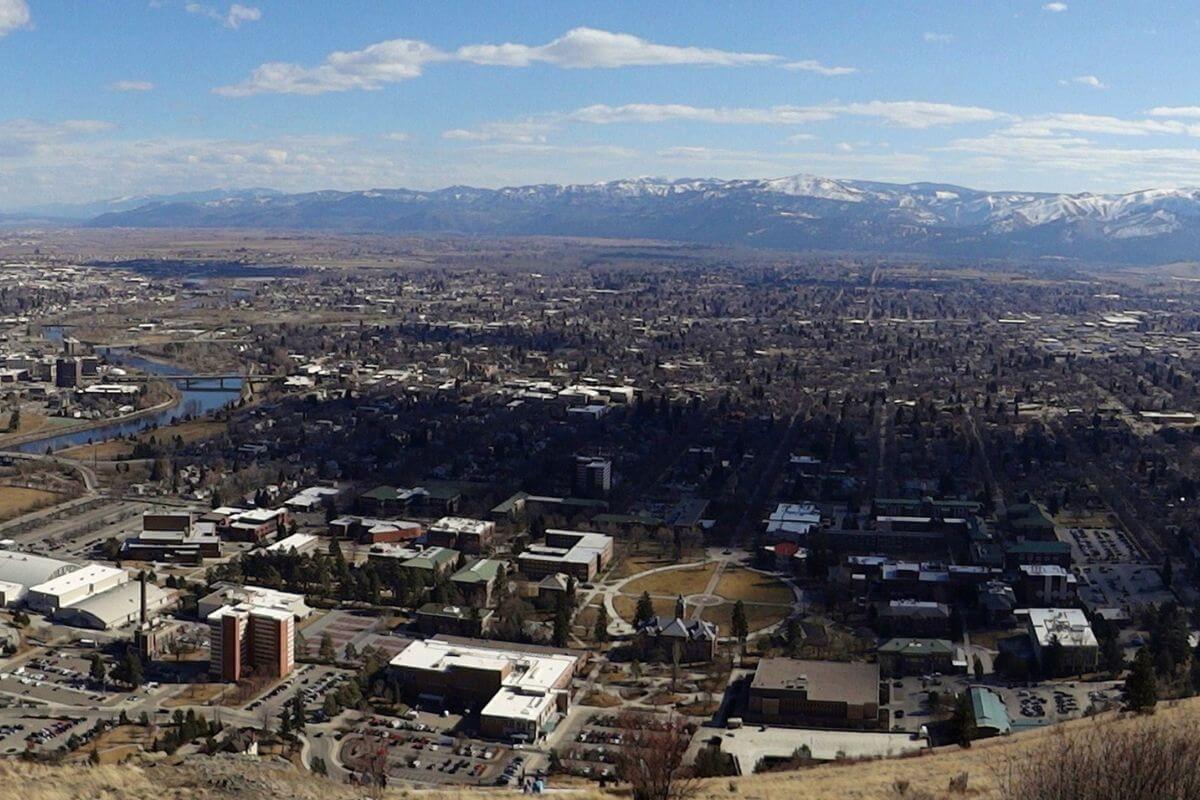
Nestled within the majestic mountain ranges of western Montana, you’ll discover a breathtaking tapestry of valleys.
From broad valleys to incised valleys, these valleys serve as the main areas where Montana’s largest cities thrive, providing a captivating backdrop for their bustling energy.
In the southwest valleys of Montana, you’ll find the Missoula Valley, known as “The Hub of Five Valleys.” It is here that Missoula, the state’s second-largest city, resides.
Surrounded by stunning forests and abundant fauna, this valley offers a perfect balance between urban convenience and natural beauty.
Central to its intellectual hub is the University of Montana, which serves as a meeting point for curious minds from all across the state.
Venture further into the mountains, and you’ll stumble upon the enchanting Gallatin Valley.
This expansive valley spans Bozeman and its surrounding areas. It is crowned by the famous Montana State University, a vibrant hub of education and innovation.
The Gallatin Valley is a playground for outdoor enthusiasts, offering endless opportunities to fish on picturesque rivers, hike through pristine wilderness, and seek wildlife encounters.
Paradise Valley, with its dry valleys and broad vistas, holds within its embrace the towns of Gardiner and Livingston.
Here, the allure lies in the gateway it provides to the grandeur of Glacier National Park. It is a haven for those seeking solace amidst towering peaks and panoramic views.
Last but not least, the Missouri River Valley weaves its way through the heart of western Montana, with its flat valleys and historic significance.
The Missouri River Valley played a crucial role in the Lewis and Clark Expedition, offering a pathway of exploration and discovery.
Today, it presents opportunities for boating, fishing, and delving into the rich tales of the past.
Montana Rivers and Lakes
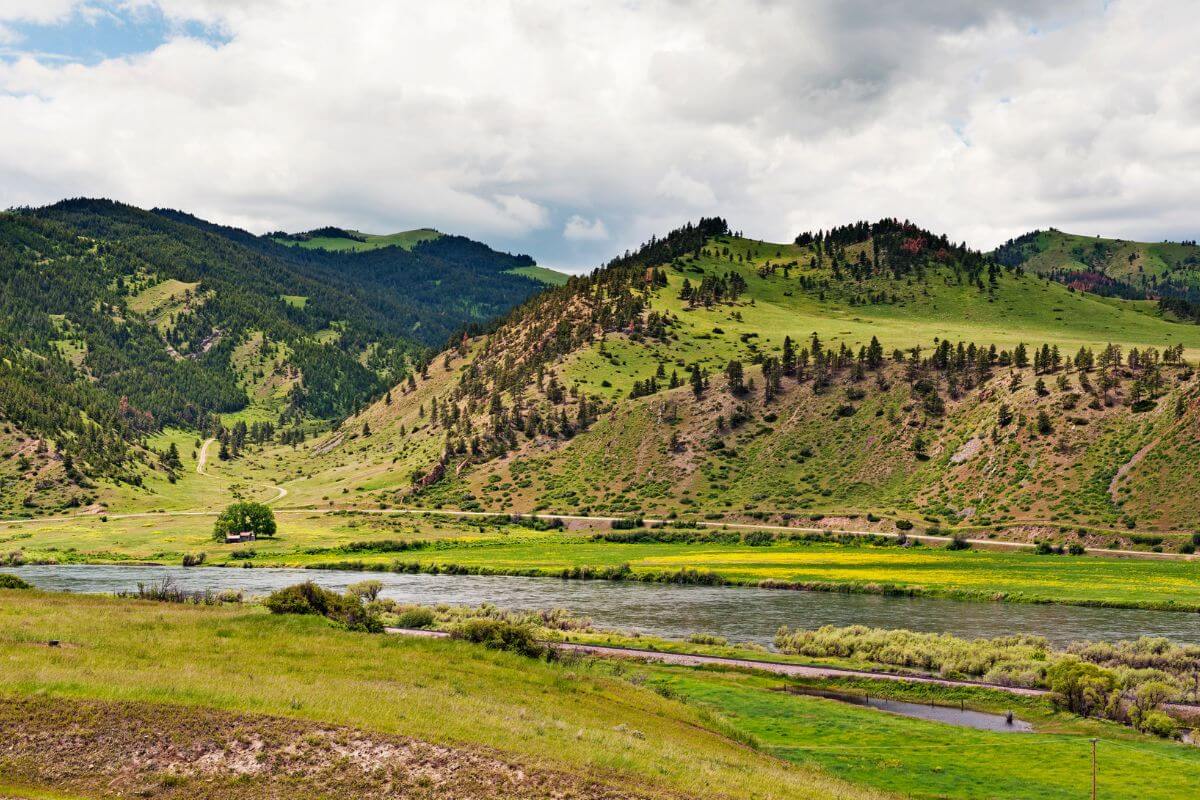
As you embark on your journey, Montana maps become invaluable companions, guiding you through the diverse terrain and helping you navigate the major rivers that flow through the state.
These waterways, such as the iconic Missouri and Yellowstone Rivers, carve their paths across the land, shaping the geographic regions and influencing the distribution of population density.
The Missouri River reigns supreme as the longest river in Montana, stretching 2,341 miles long.
This mighty river weaves through the state, coursing through canyons, valleys, and open prairies, leaving a mark on the diverse regions it touches.
In the western part of Montana, you’ll encounter the iconic Yellowstone River. Stretching across 692 miles, it serves as a vital tributary to the Missouri River.
As it meanders through the state, it showcases breathtaking scenery, with its pristine waters cutting through majestic canyons and verdant valleys.
Moreover, the Yellowstone River provides excellent fishing opportunities, with healthy populations of trout, including Rainbow Trout, Brown Trout, and Westslope Cutthroat Trout.
Another notable river is the Clark Fork River, known for its exceptional fishing opportunities. It is particularly renowned for its thriving trout populations, making it a paradise for anglers.
As you explore Montana’s rivers, you’ll be rewarded with stunning scenic views and a chance to immerse yourself in nature’s serenity.
Montana’s lakes are equally captivating, offering a tranquil escape from the world.
Montana’s Flathead Lake, measuring a remarkable 197 square miles, boasts stunning panoramic views and provides a perfect setting for numerous recreational activities such as fishing, boating, and swimming.
It is home to various fish species, including the native bull trout and Westslope Cutthroat Trout. Other major lakes, like Fort Peck Lake, add to Montana’s allure and provide opportunities for outdoor adventures.
Montana Glaciers
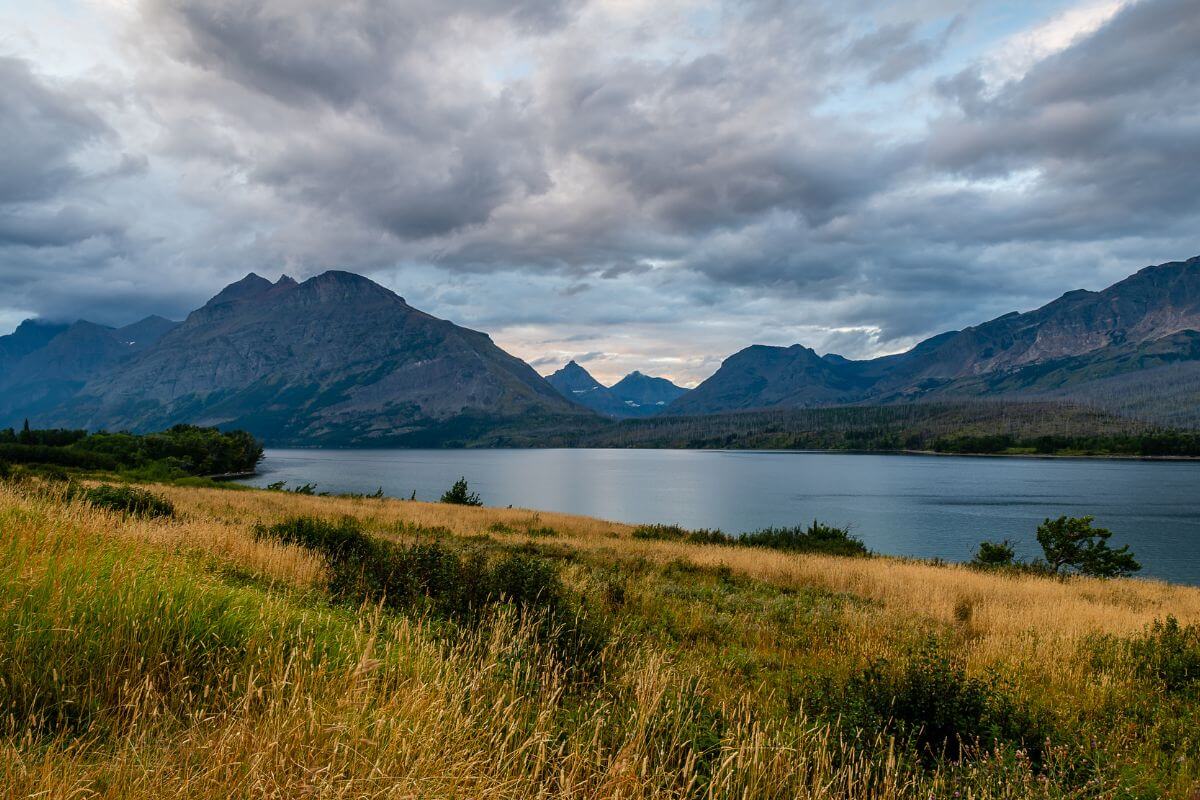
Glaciers in Montana are a majestic sight to behold. These massive ice sheets, some of which have been around for over 7,000 years, are a significant part of Montana’s geographical legacy.
Glacier National Park, alone, is home to at least 37 named glaciers, each with its own unique characteristics and significance.
Take for example the Grinnell Glacier, a true icon located in Many Glacier, a region within the park known for its collection of glaciers.
It’s a breathtaking experience to witness the sheer size and power of this ice sheet, as it slowly carves its way through the rugged landscape.
However, it’s important to note that Montana’s glaciers are slowly disappearing.
Over the past century, Montana’s glaciers have been shrinking due to the effects of global warming. It’s a sobering reminder of our changing climate and the impact it has on our environment.
Despite this, the impact of glaciers on Montana cannot be understated. These icy behemoths have shaped the landscape through processes such as erosion and deposition.
They have carved deep valleys, leaving behind U-shaped valleys that are nothing short of awe-inspiring. And the remnants of their presence can be seen in the form of moraines, drumlins, and other glacial landforms scattered throughout the state.
Montana’s glaciers are a testament to the power of nature and the delicate balance of our planet.
They serve as a reminder of the importance of preserving our environment for future generations to come.
Montana’s Landscape Holds Economic and Ecological Importance
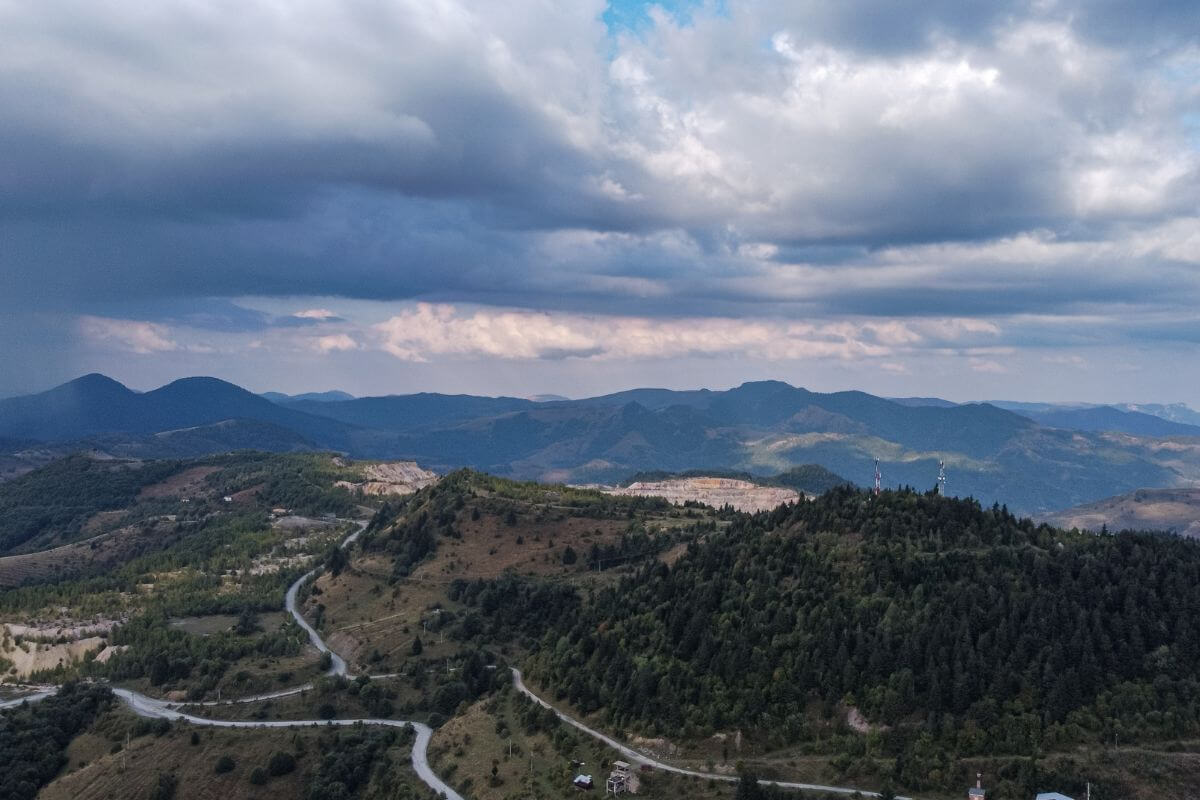
Montana’s diverse landscape holds economic and ecological importance for several reasons.
- Supports Different Industries – Montana’s landscape plays a vital role in extractive industries like coal, oil, natural gas, and precious metals. These industries contribute to employment, tax revenues, and economic growth in the state.
- Offers Outdoor Recreational Activities – Montana’s landscape offers a wide range of outdoor recreational activities to attract tourists and outdoor enthusiasts. Montana provides opportunities for hiking, camping, fishing, hunting, skiing, and wildlife viewing.
- Provides Habitats to Iconic Wildlife – Montana’s diverse ecosystems are of great ecological significance. The state is home to iconic wildlife such as grizzly bears, wolves, elk, moose, and native trout.
- Helps Combat Climate Change – The landscape in Montana helps experts better assess climate change impacts, implement adaptation strategies, and promote sustainable practices.
Montana’s landscape holds economic significance through diverse industries and natural resources, while also offering a wide range of outdoor recreational activities.
Its ecological significance lies in supporting diverse ecosystems and wildlife. Moreover, Montana plays a crucial role in combatting climate change, promoting sustainability, and implementing adaptation strategies.
Montana Physical Features Final Thoughts
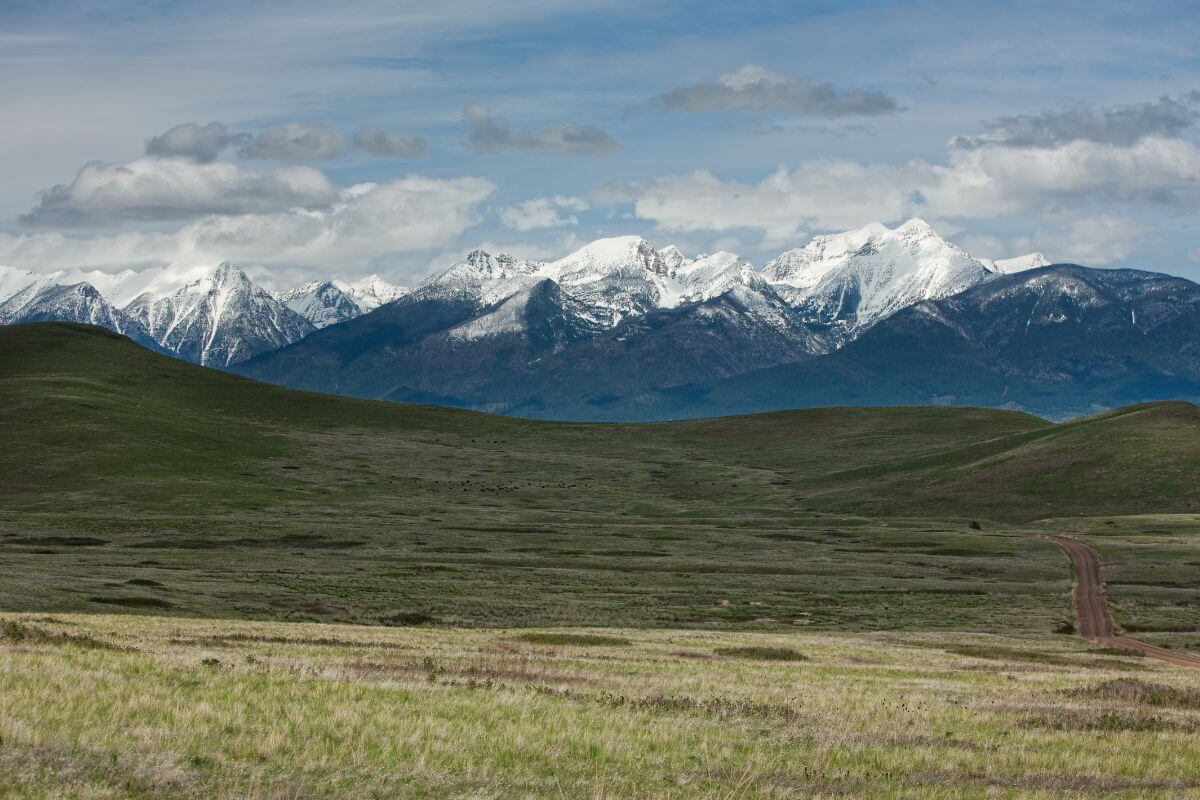
Montana’s physical features truly embody the essence of the state.
Its diverse landscape, with its majestic mountain ranges, sparkling lakes and rivers, expansive valleys, and vast plains, creates a tapestry that is both awe-inspiring and captivating.
These geological features not only define Montana’s identity but also contribute greatly to its economy and ecology.
By preserving its natural wonders, Montana makes a significant contribution to the global efforts of mitigating the challenges of climate change.
Montana’s physical features are a testament to the state’s natural splendor and its commitment to ecological preservation.
From its mountain ranges to its wide river valleys, this land of enchantment continues to captivate and inspire all who discover its boundless beauty.
Montana Physical Features FAQs
1. What Are Some Major Landforms in Montana?
When it comes to the majestic landforms of Montana, there are two regions that dominate the landscape: the Great Plains and the Rocky Mountain Region.
The Great Plains encompass 3/5 of Eastern Montana and showcase high, gently rolling land with hills and wide river valleys.
The Rocky Mountain Region covers 2/5 of Western Montana and boasts flat, grassy valleys, snow-capped mountains, and over 50 mountain ranges.
2. Does Montana Have Mountains?
Yes, Montana does indeed have mountains. Located in the western part of the state, the Montana mountains are known for their stunning beauty and rugged terrain.
Some of the prominent mountain ranges in Montana include the Big Snowy Mountains, Judith Mountains, Little Belt Mountains, Moccasin Mountains, and Crazy Mountains.
3. Is Montana Mostly Forest?
Of Montana’s vast expanse of land, which encompasses over 90 million acres, more than 22 million acres are covered by forests.
This means that forests occupy approximately 1/4 of Montana’s total land area, indicating that the state is not predominantly forested.
However, it is important to note that Montana’s forests, primarily composed of coniferous trees, play a significant role in its unique landscape and ecosystem.
4. What Are Three Landmarks in Montana?
Montana is home to several well-known landmarks that showcase its natural beauty, historical importance, and cultural significance.
Three of the most prominent ones are:
- Yellowstone National Park
- Glacier National Park
- Rocky Mountains
5. Is There a Desert in Montana?
In central Montana, you’ll be greeted by vast prairies and expansive grasslands that stretch as far as the eye can see.
As you venture towards the central portion, the terrain starts to change, revealing rugged mountains that dominate the horizon.
Despite this remarkable variety, Montana does not boast a traditional desert.
If you’re hungry for more information about Montana, check out these links to some captivating reads:
- https://www.mdt.mt.gov/travinfo/bordercrossings.shtml
- https://www.census.gov/quickfacts/MT
- https://www.nps.gov/romo/learn/nature/geologic_formations.htm
- https://www.usgs.gov/science-support/osqi/yes/resources/education/about-maps/map-projections/continental-divide-americas
- https://www.fs.usda.gov/detail/bitterroot/about-forest/?cid=fsm9_016602
- https://agr.mt.gov/Our-Agency/Marketing-Information/Brochures/Ag-Industry
- http://fwp.mt.gov/fishing/guide/montana-fishing-guide/montana-river-fishing-guide/yellowstone-river
- https://www.sciencebase.gov/catalog/item/5b194f1ce4b092d965237f5f

